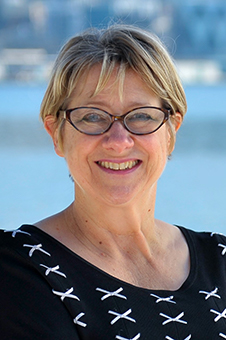New research has revealed the “shameful” extent of child poverty in Aotearoa New Zealand.
The University of Otago-led study, published today in the New Zealand Medical Journal, involved 168 12-year-olds wearing automatic cameras for four days.
The innovative Kids'Cam cameras took a photo every seven seconds, exposing the impacts of child poverty in multiple ways – less access to healthy food and educational resources, poorer housing and fewer opportunities for structured physical activity.

Professor Louise Signal.
Senior author Professor Louise Signal, of Otago's Department of Public Health, says it is “shameful we allow children to live in poverty in Aotearoa New Zealand”.
“It permanently impacts children's health and wellbeing and is no way to build a thriving nation,” she says.
Poverty is a significant health and equity issue in Aotearoa New Zealand, affecting more than 20 per cent of children. Māori and Pacific children experience rates almost twice as high as New Zealand European children. The result is an environment that fails to support children's right to healthy development and uphold Te Tiriti.
“In this study we compared the images of the children living in high and low deprivation to better understand what it means for children to live in poverty from a child's perspective,” Professor Signal says.
New Zealand children living in poverty appeared to have access to fewer types of fruit and vegetables, and less educational materials and physical activity equipment available than their more privileged peers.
They lived in homes with more structural problems and mould, were less likely to have fixed heating sources, computers, material possessions and 'personal space', i.e. their own bedroom, desk for studying and 'personal items' like books, posters, and games.
They appeared to participate in fewer educational activities and structured physical activities. However, there was no difference in unstructured physical activities, in part because backyards appear equally available and are popular places to play.
“These children show comprehensive policies are urgently needed to address the complex problem of child poverty.
“Adults don't appear to see this – unlike the children in this study. The adults of this country need to take action to end child poverty. Perhaps these children's images will help this be achieved.”
Professor Signal says since data was collected, there have been some welcome improvements to housing and benefit levels and a cost-of-living payment to non-beneficiary low-income earners was announced this week. Yet, the issue of child poverty remains in Aotearoa, damaging the health and wellbeing of our children.
This research was funded by the Health Research Council of New Zealand and the New Zealand Lotteries Commission.Publication details
Children's perspectives on the wicked problem of child poverty in Aotearoa New Zealand: a wearable camera study
Ryan Gage, Tim Chambers, Moira Smith, Christina McKerchar, Viliami Puloka, Amber Pearson, Ichiro Kawachi, and Louise Signal
New Zealand Medical Journal
For more information, contact:
Professor Louise Signal
Head of Department of Public Health
University of Otago, Wellington
Email louise.signal@otago.ac.nz
Ellie Rowley
Communications Adviser
University of Otago
Mob +64 21 278 8200
Email ellie.rowley@otago.ac.nz
Find an Otago expert
Use our Media Expertise Database to find an Otago researcher for media comment.